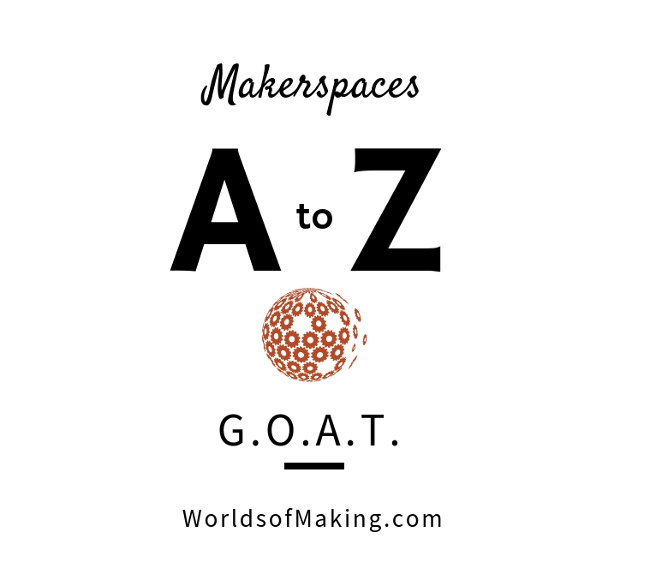Makerspaces A to Z: G.O.A.T.
What are our metrics as educators, in terms of makerspaces?

I recently listened to a Freakonomics podcast called “The Future of Meat”, yes, meat. Although seemingly unrelated to makerspaces, there were parallels to my makerspace journey. For example, in the podcast, it was suggested that the only way to truly disrupt the meat industry is to build a better meat from the ground up. ``This is the exact mindset I had when I wrote my second book, The Kickstart Guide to Making GREAT Makerspaces. The goal of this book was, and still is, to help K-12 educators (and beyond) plan, build and create not just makerspaces, but GREAT ones, from the ground up.
With that in mind, a thought crossed my mind this week that we’ve all spent a lot of time throwing around the term “G.O.A.T.” these days (Greatest. Of. All. Time.), particularly in relation to the history of sports.
According to Google, these are some of the G.O.A.T.s in the history of sports.
Tiger Woods. Sport: Golf
Tom Brady. Sport: Football
Michael Phelps. Sport: Swimming.
Serena Williams. Sport: Tennis.
Tech & Learning Newsletter
Tools and ideas to transform education. Sign up below.
Pele. Sport: Soccer.
Muhammad Ali. Sport: Boxing.
Wayne Gretzky. Sport: Hockey.
Michael Jordan. Sport: Basketball.
Babe Ruth. Sport: Baseball.
G.O.A.T. is an acronym now used in relation to more than just athletes, but humanity, video games, restaurants, etc., so how can we push our thinking and our work ever further than my book suggests, and not just plan, build and create GREAT makerspaces, but the G.O.A.T.?
While I definitely would like to think Claude Lemieux and Lenny Dykstra should be on the above list ;), determining the G.O.A.T. in terms of athletes is not a subjective as it may seem. For example, ESPN uses unique metrics that factor in attributes of athletes, such as speed, power, reaction time and more.
So what are our metrics as educators, in terms of makerspaces? Would they focus more results and not facilities and resources? What about the equality of results, and not in terms of how much money a school spends on a makerspace, but by how much those makerspaces have taught and meant to the students, and the equality of opportunity? What mechanisms can we put into place that could assure equality of results, disregarding the fanfare for ‘the stuff’, and instead focusing on the actual impact? What strategies could be carried out to reduce the differences in educational opportunities that makerspaces provide, rather than perpetuate them? Can makerspaces do more? Can they make educational outcomes less dependent on money than they are now?
What factors should we as educators consider when planning, building and creating a makerspace, with the goal of trying to create the G.O.A.T.? Share your thoughts at #makerspacesAtoZ.
Thanks for checking out my #MakerspacesAtoZ blog series. In case you missed it, you can catch my previous posts here:
A: Aspirational
B: Boring
C: Combinatory
D: Disobedient
E: Enterprising
F: Fundamental
Cross posted at worlds-of-learning.com
Laura Fleming has been a classroom teacher and media specialist in grades K-8 and currently is a Library Media Specialist for grades 9-12. She is a well known writer, speaker and consultant on next-generation teaching methods and tools, and the author of the best-selling Worlds of Learning: Best Practices for Establishing a Makerspace for Your School
